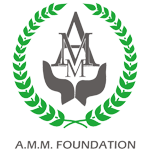ALMA, BALACLAVA, AND INKERMAN – WESTWARD HO
One may naturally wonder what these three battles of the Crimean War, would have to do with this district in general and the township of Coonoor in particular ; the battle of Alma, which took place just south of the river of the same name which flows through the Crimean Peninsula ; the Battle of Balaclava, famed for the Charge of the Light Brigade, immortalised in Tennyson’s poem ; and the Battle of Inkerman, which finally broke the will of the Russian Army.
All the three engagements between the allied forces of the Ottoman Empire, France, Britain and Sardinia ; and the Russian Empire took place in 1854. This year is of quite some importance as we will see later.
Leaving the battles we now move on to the growth of Coonoor, a region which in 1838, was lightly dismissed of as a settlement leave alone a station. But the opening of the Coonoor Ghat and the growing popularity soon of this route changed all this, and soon Coonoor grew in importance as a stopover point in the 1840s
Unlike the English Capital where the West-End is known to be populated by the cream of the society and has the major share of commercial establishments, as compared with the impoverished East-End ; it was the eastern portion of Coonoor which largely developed and was inhabited by the nibs, a trend which seems to persist to this very day. Perhaps the climate had something to do with the choice. The East-End of London is prone to the far famed English fogs, maybe the converse was true for Coonoor. It is a fact that Coonoor was vulnerable to these vapours rising from the valley below, and was initially not much favoured on that account. In those far of days it was widely believed that these fogs bore contagion and were the chief cause of malaria.
According to the gazetteer of Sir Francis, Coonoor in 1842 appears to have had only four European residences according to land records. The names of the owners are given as a Mr. H. R. Dawson, a Mr. Norris, a Major-General Kennett (the oldest resident), and a Major-General Wahab. The last is no Indian Officer, ‘Wahab’ is an English corruption of an old Welsh surname, ‘Wauchope.’
But in 1847 Coonoor soon had a population of 397 souls which included 7 Europeans. The total number of households had risen to 155. Of these 14 belonged to Europeans which were placed on the crest of a range of hills running down from the Coonoor Peak, and the native ones are reported to lay in the hollow below. According to the gazetteer of Sir Francis, Woodcote built by a Mr Lascelles in the same year, was the sole European residence of West-End Coonoor.
So when did Coonoor begin to expand further westwards. The answer is quite simple, only after 1854, the year during which the three Crimean battles took place.
According to Sir Francis soon after Woodcote was built, there appeared on the scene, three more houses jointly called as the Crimean properties of General J. W. Cleveland, ‘Balaclava, Alma, and Inkerman.’
Sir Francis isn’t quite too sure about the year they were constructed and just plainly states that they were built soon after Woodcote came into existence. But going by the names, it is only logical that they could have at the most been built after the battles, or perhaps only after the conclusion of the Crimean War which ended in 1856.
Westward expansion in earnest looks to have occurred by the early part of the 1860s as a few more residences are known to have come up, and one such will be dwelt upon in detail in the next write up
The three properties still exist, the first two as private residences. The last now functions as the convent of the ‘Little Sisters of the Poor,’ just adjacent to the Sagayamatha Hospital. The credit of pointing this out from an in-comprehensive map goes to Mr. Allan Oakley a long-time resident of Coonoor.
The Inkerman stables were transformed into a little cottage where four ladies could be accommodated on 11 February 1969. Four Sisters arrived in early 1969 and arranged the little cottage to begin a temporary Home for the impoverished, old and infirm. Later on in September of the same year, the establishment moved into the main bungalow.
As far General J. W. Cleveland, not much details are forthcoming about that gentleman and the trail is too cold. The Oriental Herald, and Journal of General Literature ; lists a senior lieutenant of the same name as belonging to the 19th regiment of the Native Infantry as on 1823, and maybe this could have been the worthy general.











